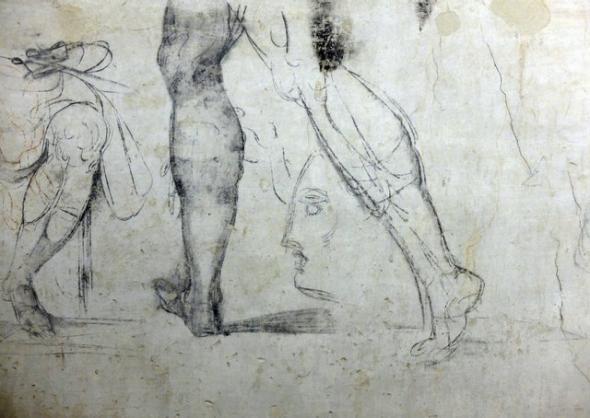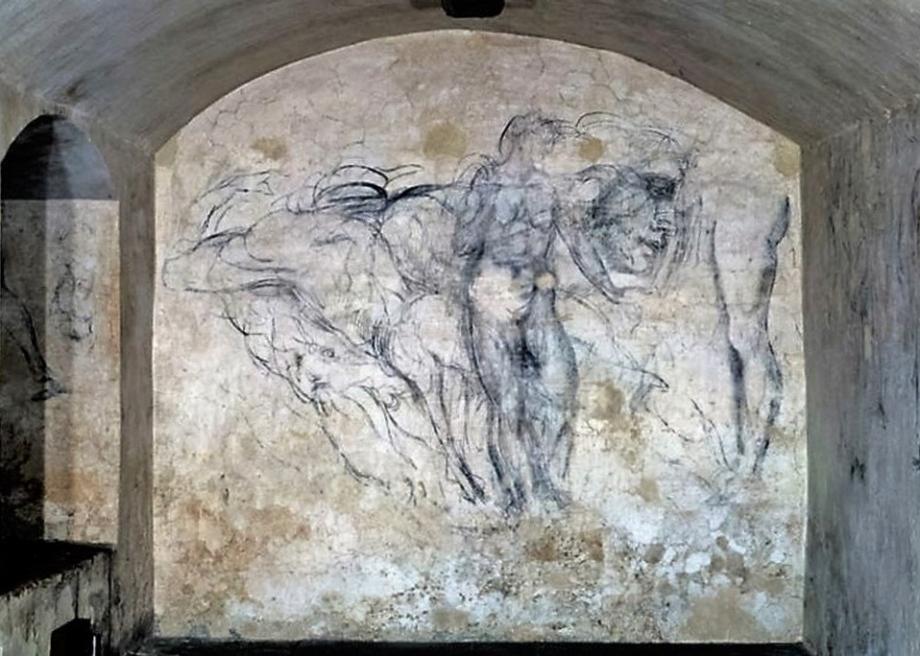Atlas Obscura on Slate is a blog about the world’s hidden wonders. Like us on Facebook or follow us on Twitter.
In 1530, to escape the wrath of the Pope, Michelangelo holed up in a tiny secret room under the Medici Chapel of the Basilica di San Lorenzo. The artist had been working on the lavish tomb when all hell broke loose in Florence, Italy, and he was forced into hiding. With nothing but time and a little charcoal on his hands, he covered the bare walls with some prisoner graffiti.
Michelangelo di Lodovico Buonarroti Simoni designed the Medici Chapel as an elaborate domed mausoleum for his patron family, but for three months he hid underneath it and filled the walls with drawings—of himself, of Christ, and even, some experts believe, sketched reproductions of images from the ceiling of the Sistine Chapel, which he had completed in 1512.
Michelangelo owed his career to the Medici, one of the wealthiest and most powerful families in Europe. In 1529 he joined ranks with other Florentines who had grown weary of their rule, hoping for a more democratic system of governance. Defying the formidable family, let alone the Pope (Clement VII, who was a Medici), was more than a little counterintuitive for the artist, whose livelihood depended on them. But defy he did, working to help fortify the city walls against Medici-friendly forces led by the Pope himself.
After 10 months of struggle the Pope and his family won, and the republican sympathizers were swiftly punished. This would have included Michelangelo, had he not retreated for those three months to his subterranean hideaway to wait it out.

In November of 1530, after the Pope let it be known that Michelangelo could go back to work—unpunished—to complete the Chapel, he reemerged. All was forgiven between the artist and his patrons, eager to finally have their finished tomb. Michelangelo never let on where he had been, and for almost 500 years his whereabouts remained a secret. During this time, some believed he had been staying with a friend or in a church bell tower.
The room and the drawings weren’t discovered until 1976, when they were stumbled upon by the director of the Museum of the Medici Chapel. Since then, given its fragility, the tiny, dark, and unvented space has been alternately opened and closed to the public. Imagine spending three months down there with nothing but doodling to keep you occupied.
As it turns out, it’s not healthy for the drawings to have too many tourists breathing on them, so the secret room is currently officially closed to the public. They do make occasional exceptions, so it’s worth a try to ask around if you’re there—you may get lucky.
Contributed by Atlas Obscura user AaronNetsky
If you liked this, you’ll probably enjoy Atlas Obscura’s New York Times best-selling book, which collects more than 700 of the world’s strangest and most amazing places: Atlas Obscura: An Explorer’s Guide to the World’s Hidden Wonders.
